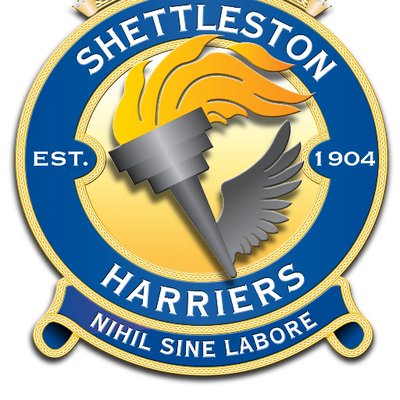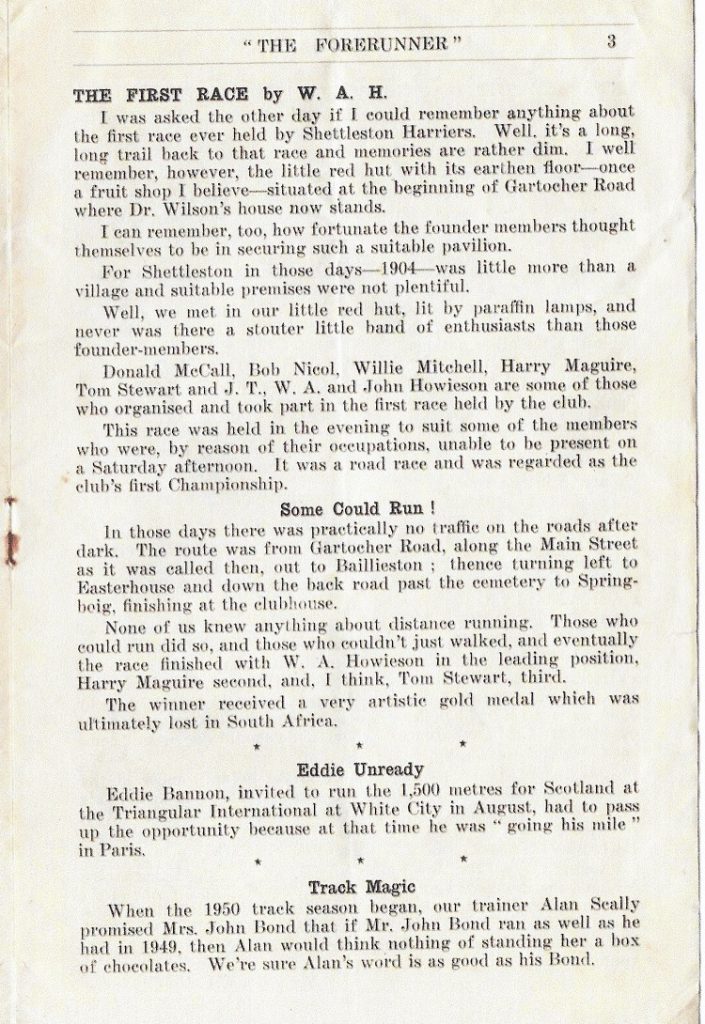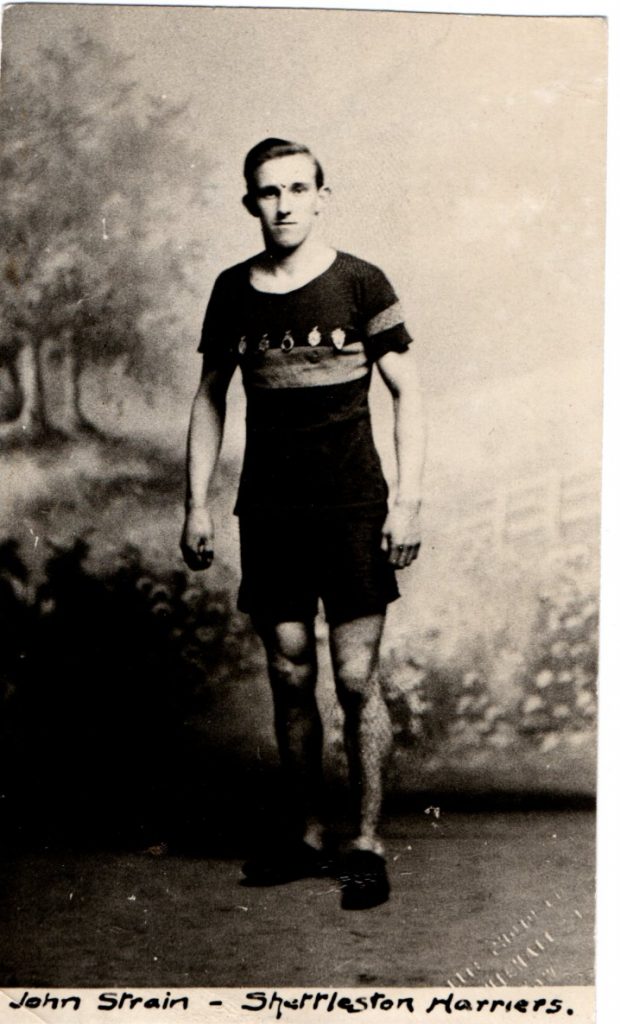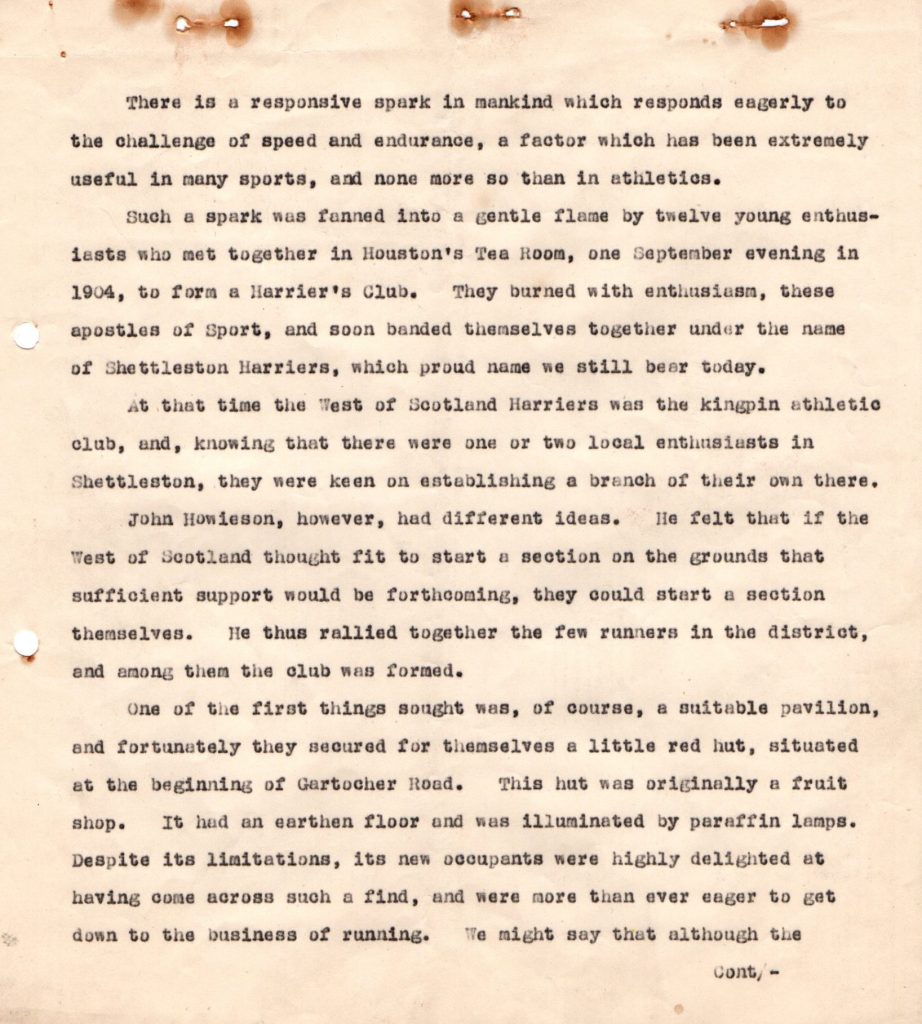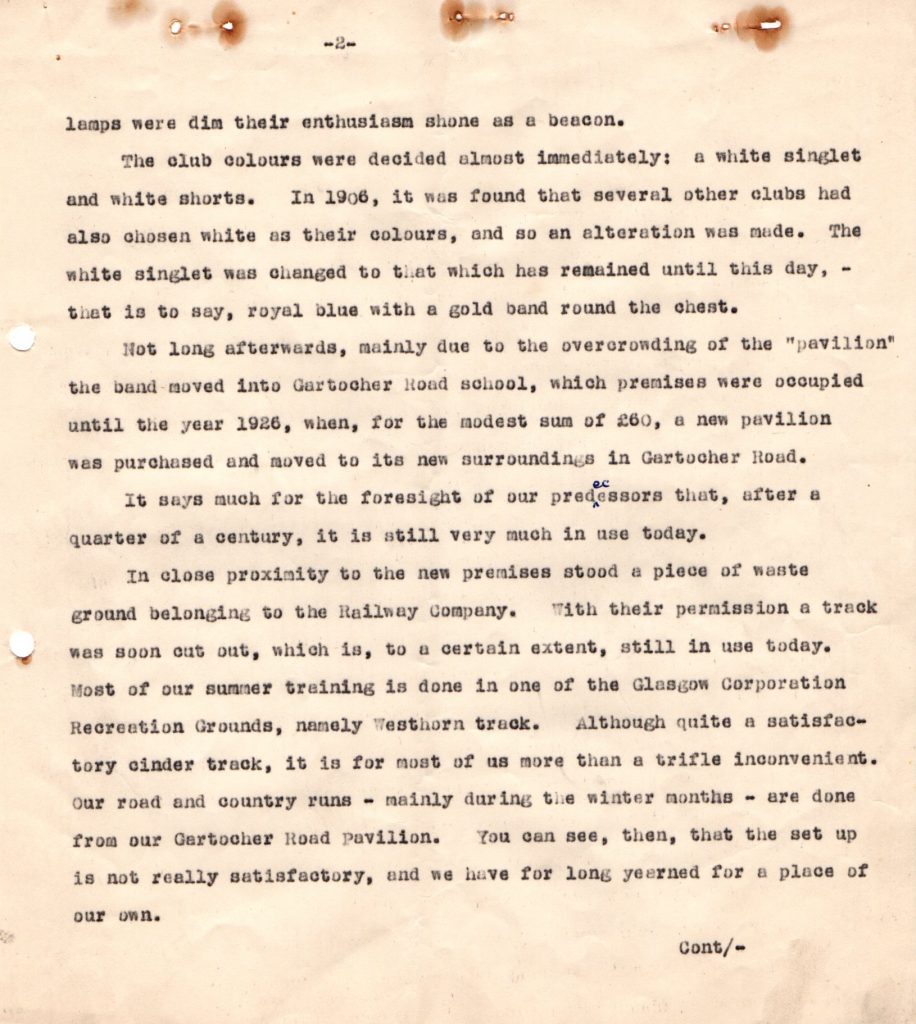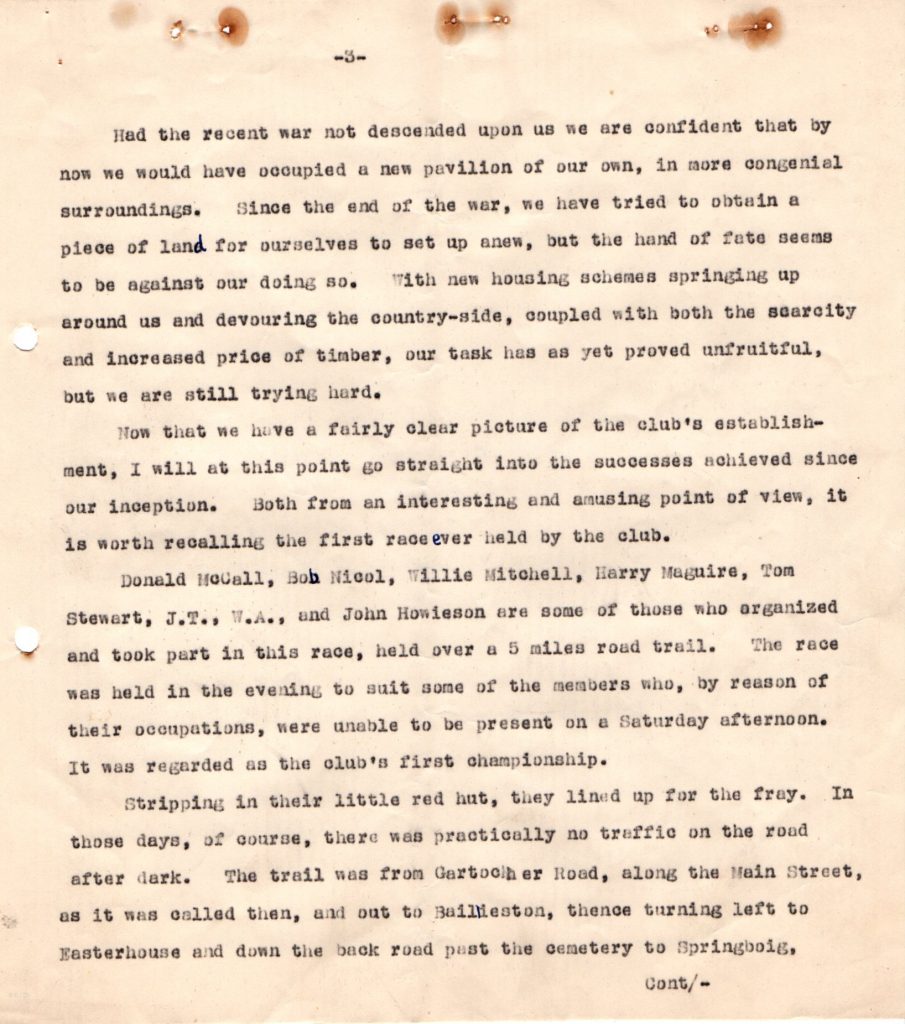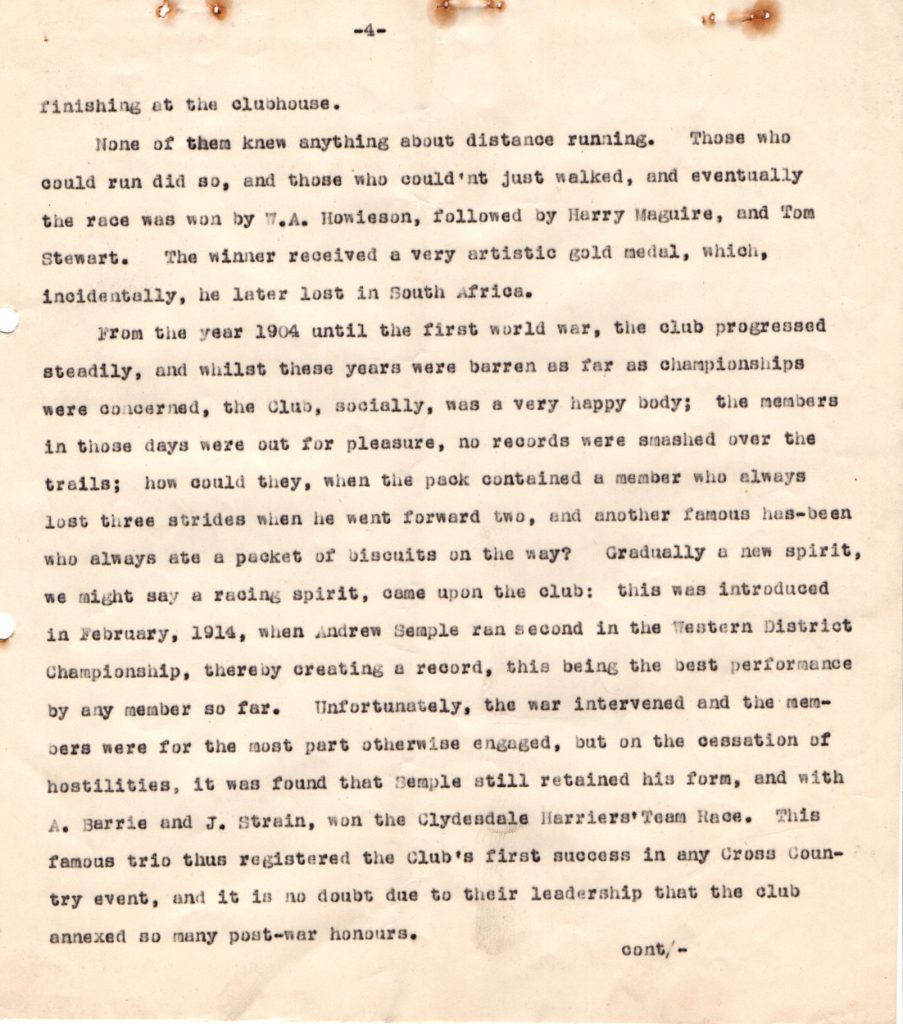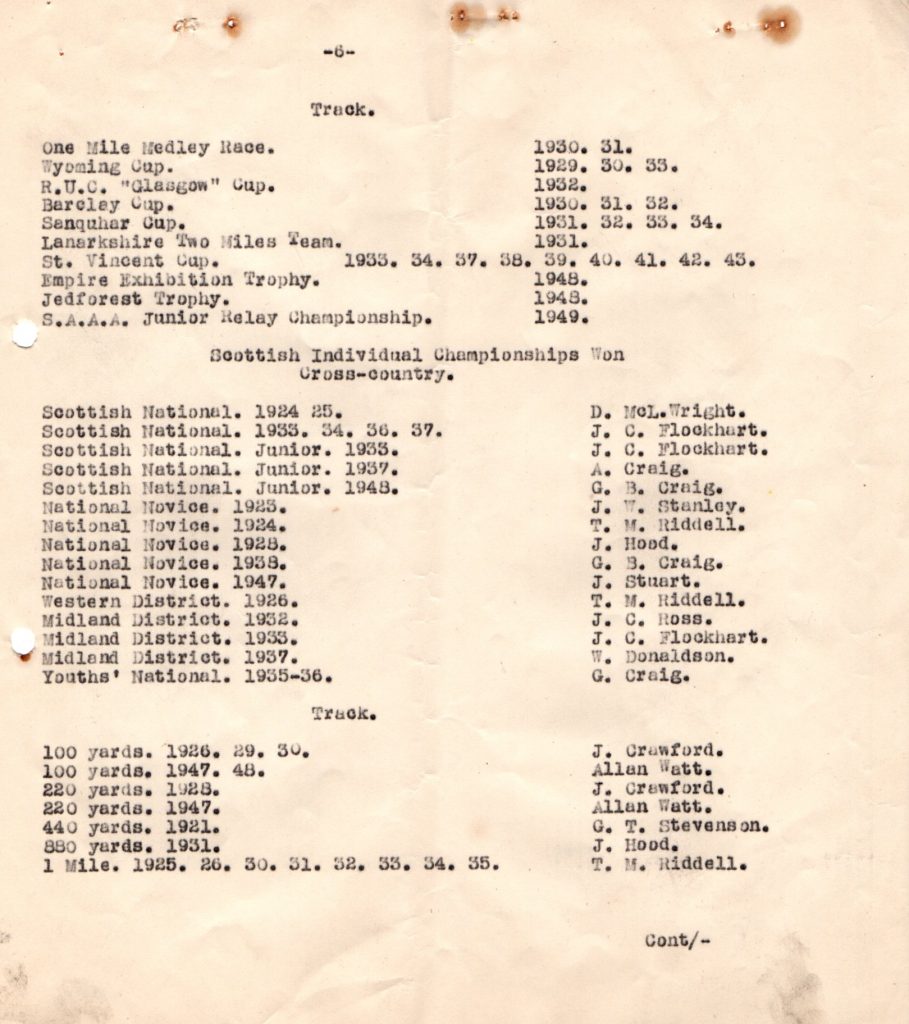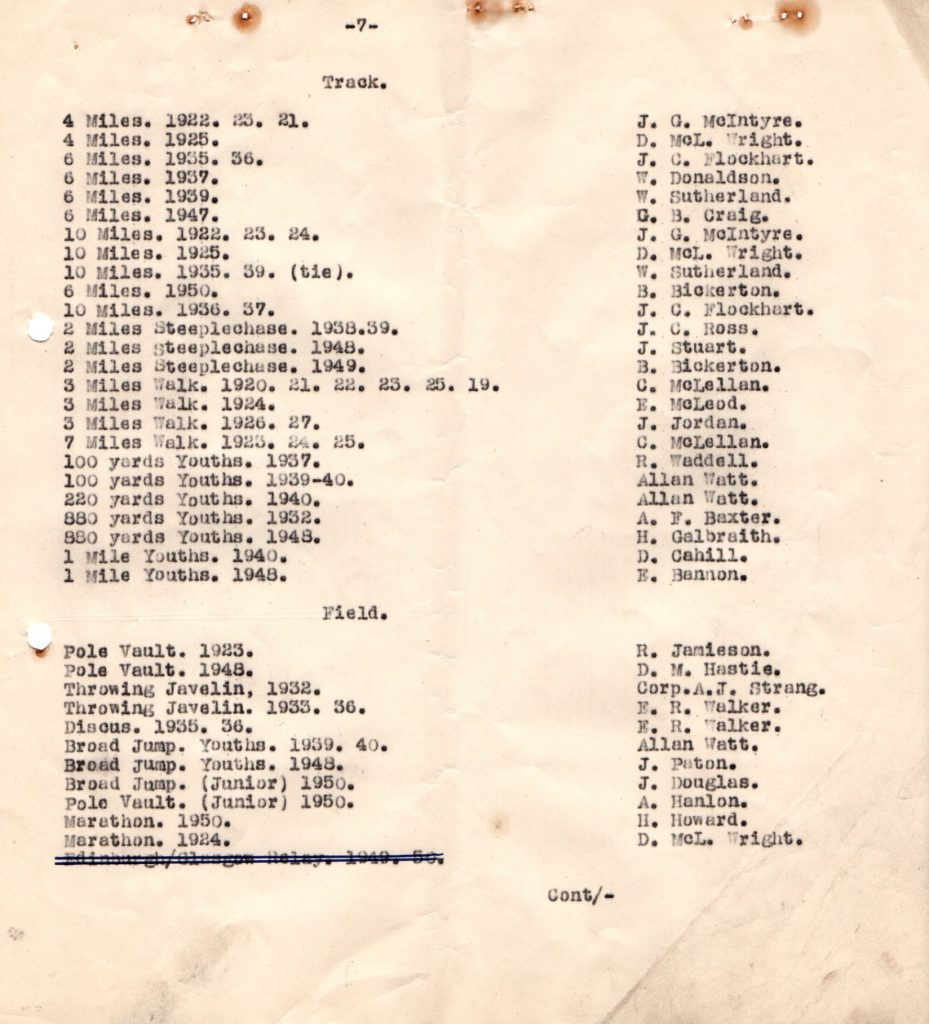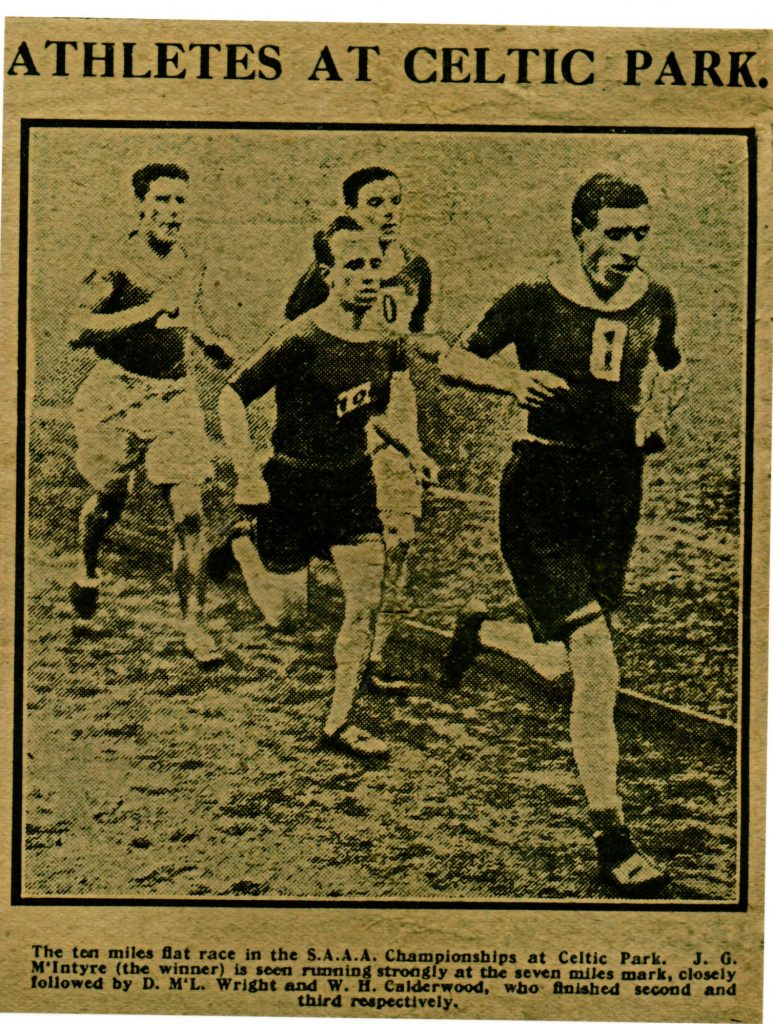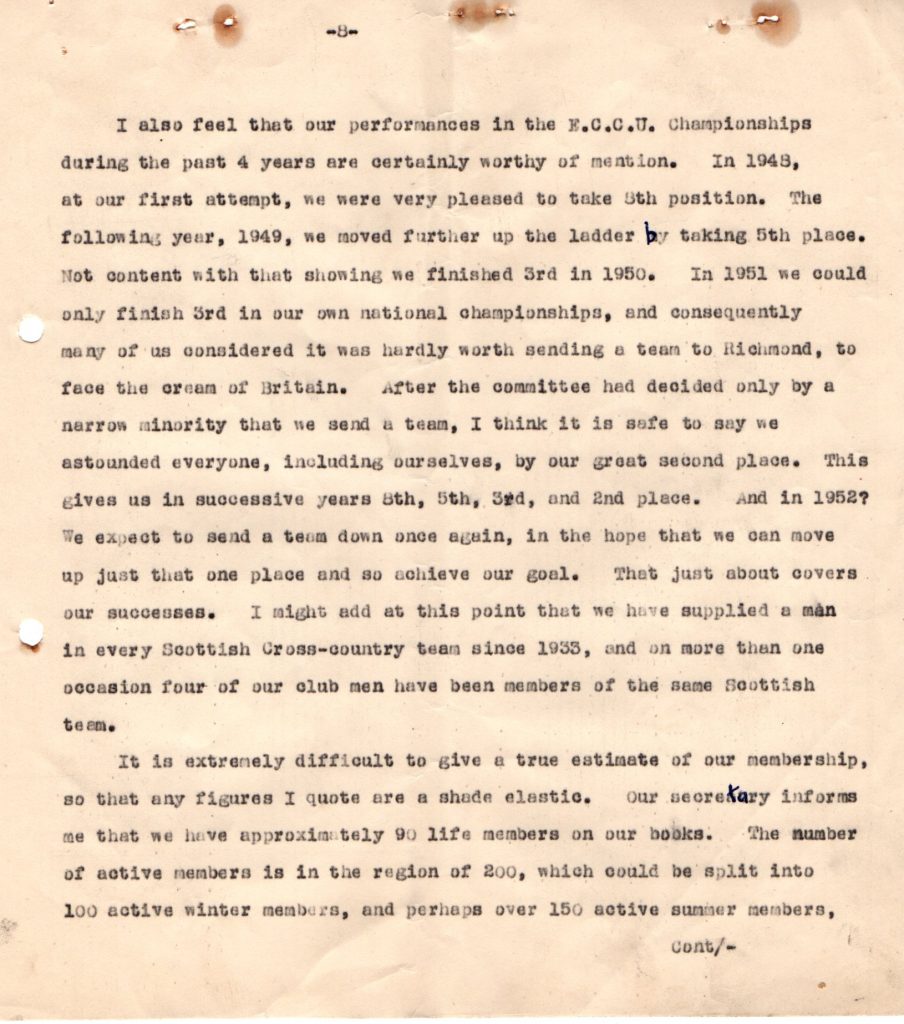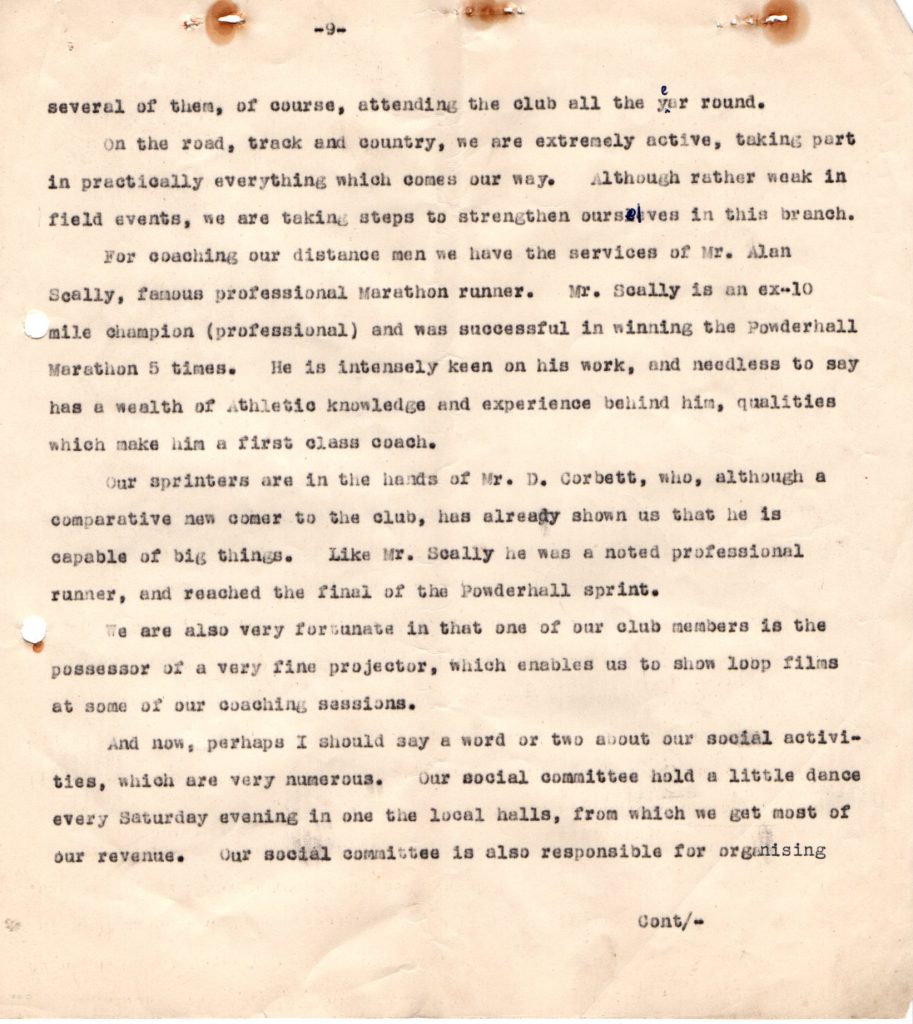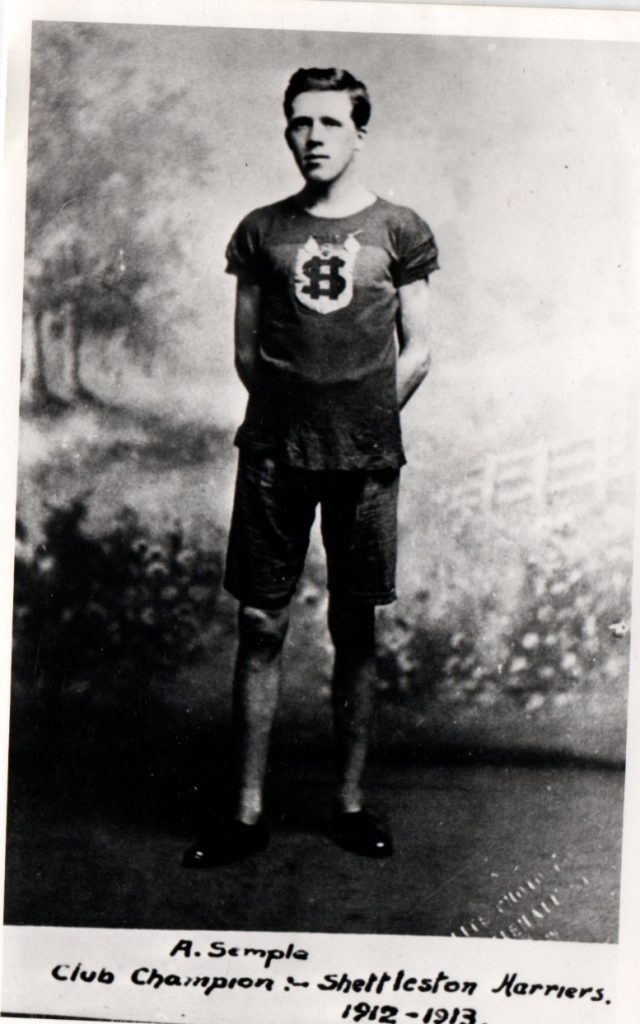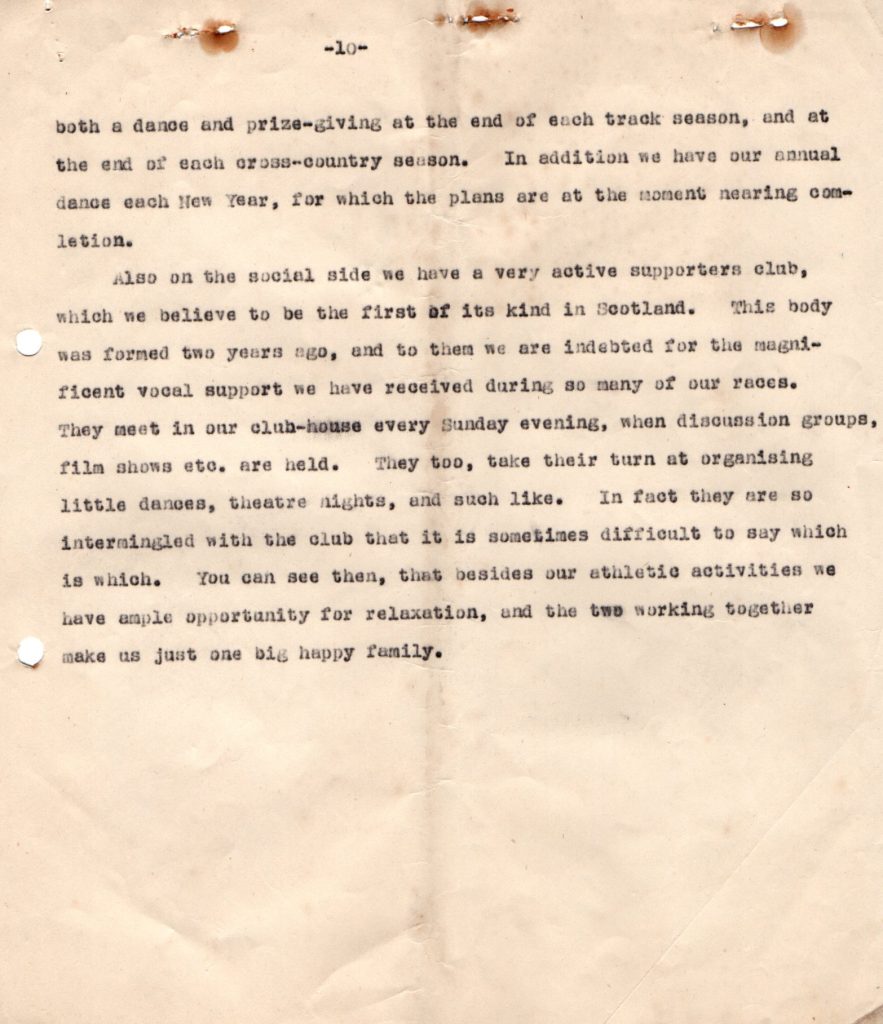Shettleston Harriers has been one of the more successful clubs in Scotland throughout most of their long history. We have commented on some of their most successful years in the section under the ‘Fast Pack’ heading, and many of their athletes such as Lachie Stewart, Graham Everett, Dick Wedlock, Jim Flockhart and others have been profiled in their own right. This page will look at the origins of the club since their establishment in 1904. First there will be coverage of the initial meeting to form the club from the official club history, Then an account of the first run from a club magazine of 1950. Then there will be a history of the club from its inception to 1951, written by Ben Bickerton who was a great club man and about whom there will be some comments afterwards. The history is reproduced as it was written simply because it is a historical document and in the original format it has a particular significance. First we have the
The club history – “One Hundred Years of Shettleston Harriers. An East End Odyssey” by John Cairney – is an excellent and detailed publication with probably the best statistical section (by John McKay) of any club history produced north of the Border and goes into more detail, starting with the following quote:
“On Friday September 23rd 1904 the Glasgow based sports newspaper ‘The Scottish Referee’ carried the following report. ‘A meeting for the purpose of forming a harriers club for Shettleston and district was held in Houston’s Academy Tearoom, Shettleston, on Friday, September 9th. It was decided to proceed. Mr R Nicol if 6 Balgair Terrace Shettleston was elected secretary. At a hugely attended meeting held in Shettleston last Monday night 19th September, it was decided to resolve to form a harrier club in the district to be called “Shettleston Harriers”. Office bearers were appointed. Suitable accommodation has been secured as headquarters in Gartocher Road and it is the intention to have weeknight runs as well as Saturday afternoons. Close on 30 have already joined the new venture including such well known names as Kitson and Howieson.”
The club had its own magazine, called the Forerunner and Volume 1, Number 1 was published in November 195o. It contained an article about this first run which is reproduced below.
John MacKay was good enough to share the following history of the club which was written by Ben Bickerton in 1951. There will be some notes about Ben at the end of the article which lays out in some detail the formation and history of Shettleston Harriers. The photographs were not part of the original article.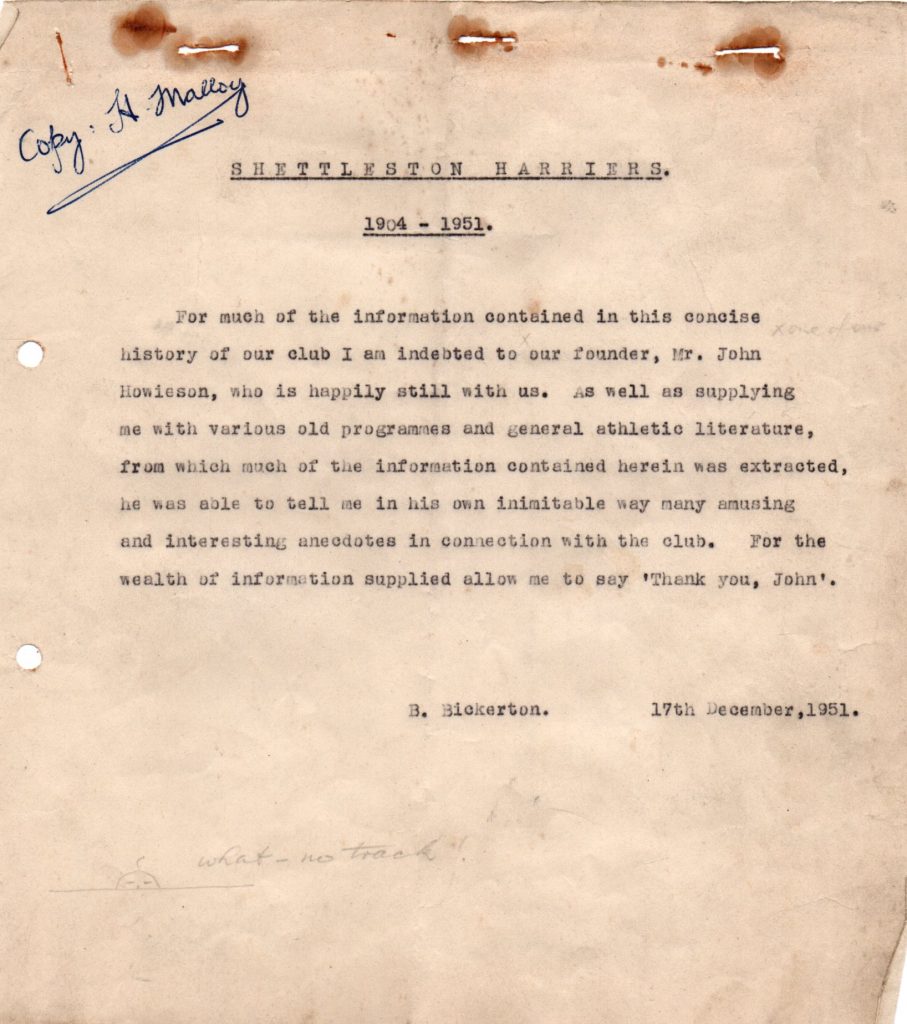
That was written by Ben in 1951. The following comments were written for another page on this site but bear repeating here, I think.
Ben Bickerton ran for Shettleston between 1943 when he joined the club and 1952 when he stopped running. He returned as a veteran in the 1970’s and won more titles but we will come to that. Joining the club in 1943, he won the unofficial Scottish Youth’s Cross Country Championship in 1944 before going on National Service to Aldershot with the Royal Artillery. While there he won the Southern Command Mile Championship and then came second in the British Army Mile championships. He came out of the Army and in 1949 won the SAAA Two Miles Steeplechase Championship and a year later won the SAAA Six Miles title. He ran in five Edinburgh to Glasgow Relays and came away with two gold and three silvers – not bad. The two golds were in 1949 when he ran the fourth stage in the April race and in November he had the fastest stage time on the seventh leg. In 1951, ’52 and ’53 he covered the seventh, first and eighth legs in teams that finished second. He ran in the London to Brighton 12 man relay twice – on the first stage in 1951 when the club was eleventh, and on the fourth in 1952 when they were seventeenth. He only ran the National twice – in 1950 when he was fourth and second counter in the winning team, and 1951 when he was seventh and first counter in the third placed team. He also had first and second team medals in the Midlands Championships and a first, second and third team medals set in the Midlands relays; he had first and second individual medals in the Lanarkshire Championships and won the Shettleston club championship in season 1950-51.
In 1952, he is reported in the club’s centenary history as feeling that he was becoming “stale” and so he gave up running to concentrate on his career as a photographer – which explains why the pictures in the SA were so good! He made a come-back as a veteran in the M50 class in the 1970’s and finished twenty seventh (1973), covered the seventh, first and eighth legs in teams that finished second. He ran in the London to Brighton 12 man relay twice – on the first stage in 1951 when the club was eleventh, and on the fourth in 1952 when they were seventeenth. He only ran the National twice – in 1950 when he was fourth and second counter in the winning team, and 1951 when he was seventh and first counter in the third placed team. He also had first and second team medals in the Midlands Championships and a first, second and third team medals set in the Midlands relays; he had first and second individual medals in the Lanarkshire Championships and won the Shettleston club championship in season 1950-51.
In 1952, he is reported in the club’s centenary history as feeling that he was becoming “stale” and so he gave up running to concentrate on his career as a photographer – which explains why the pictures in the SA were so good! He made a come-back as a veteran in the M50 class in the 1970’s and finished twenty seventh (1973), fourteenth (1974), twenty third (1975), eighteenth (1976) and twenty fourth (1977) in the Vets National Cross-Country.
